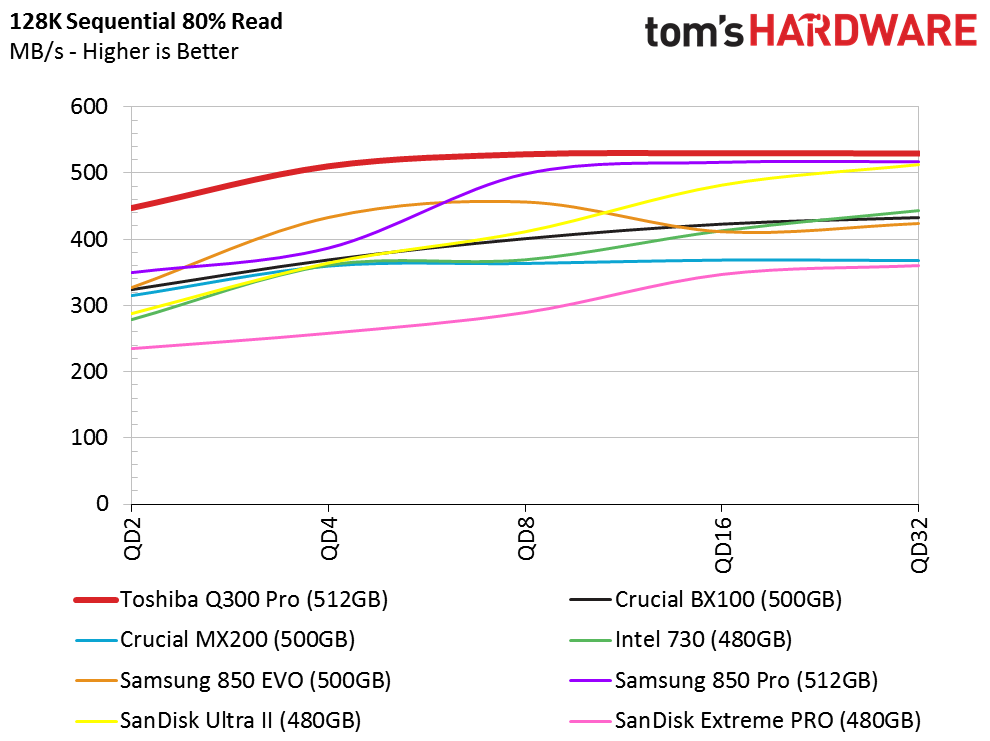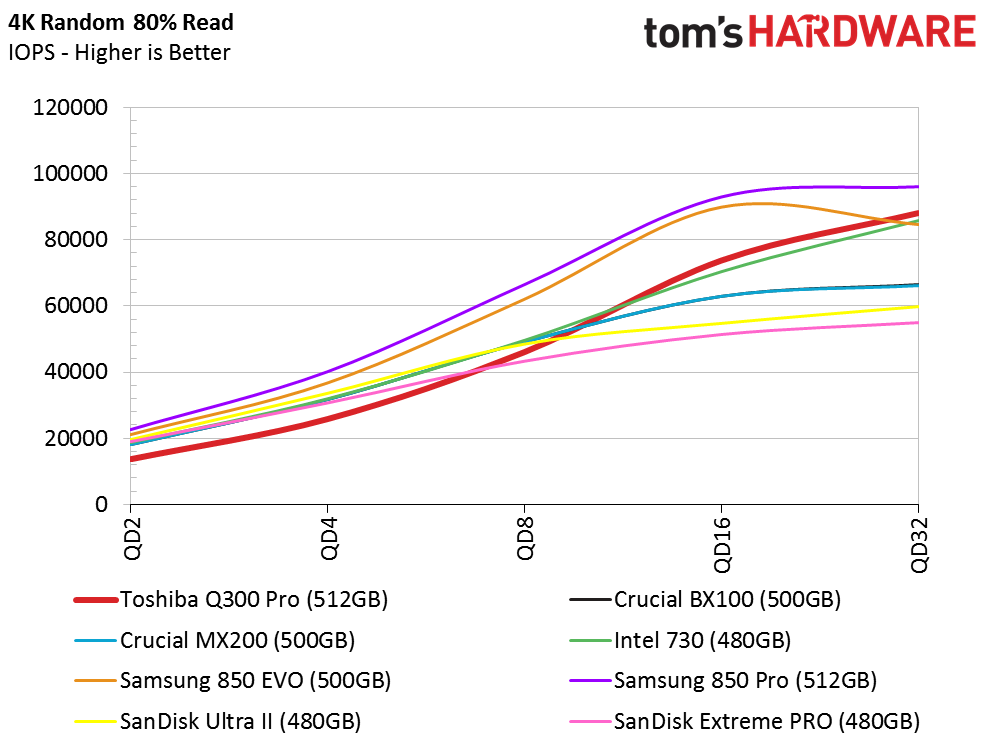Toshiba Q300 Pro 512GB MLC SSD Review
Toshiba recently launched two new SSDs for the entry-level and mainstream markets. Today, we look at the top-tier MLC-based Q300 Pro and find that it could be a serious contender in the market.
Why you can trust Tom's Hardware
Mixed Workload And Steady State
80 Percent Sequential Mixed Workload
In the past, we've talked about how companies tune SSDs for real-world tasks, and how those optimizations rarely show up in 100 percent read or write workloads under synthetic testing. Toshiba's Q300 Pro gives us a clear example of this, demonstrating why these results are so important to measure. Later we'll see how they map over to real-world software.
80 Percent Random Mixed Workload
Random performance, even in the context of a mixed workload, is still problematic for the Q300 Pro. Without a DRAM buffer, the controller simply can't be tuned to deliver the same performance as drives with fast cache.
Sequential Steady State
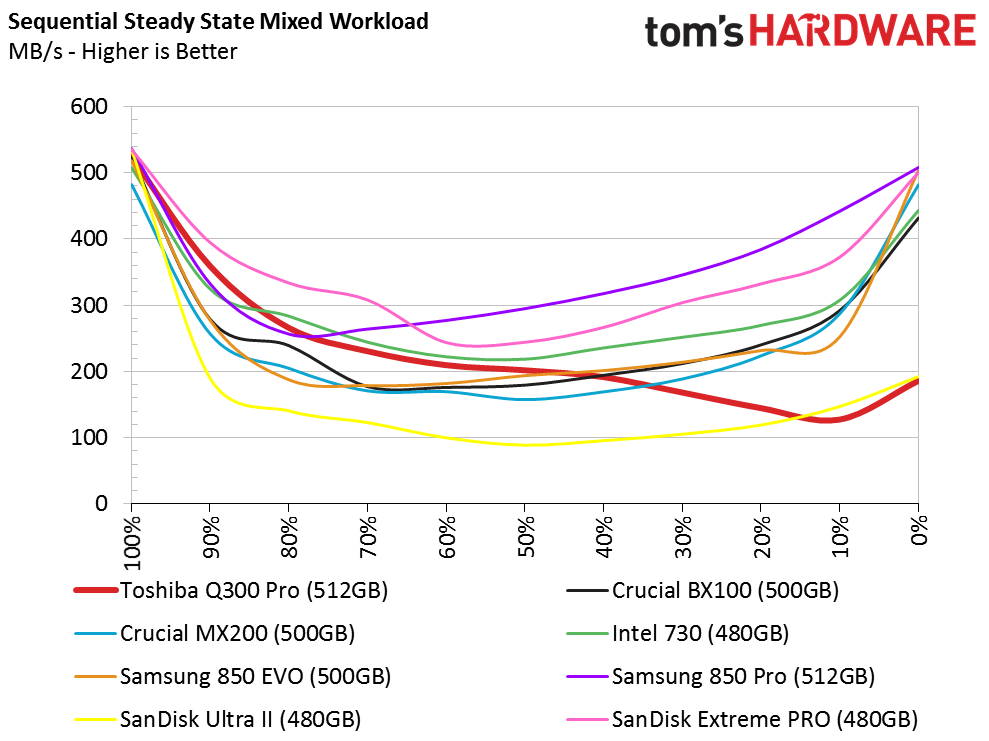
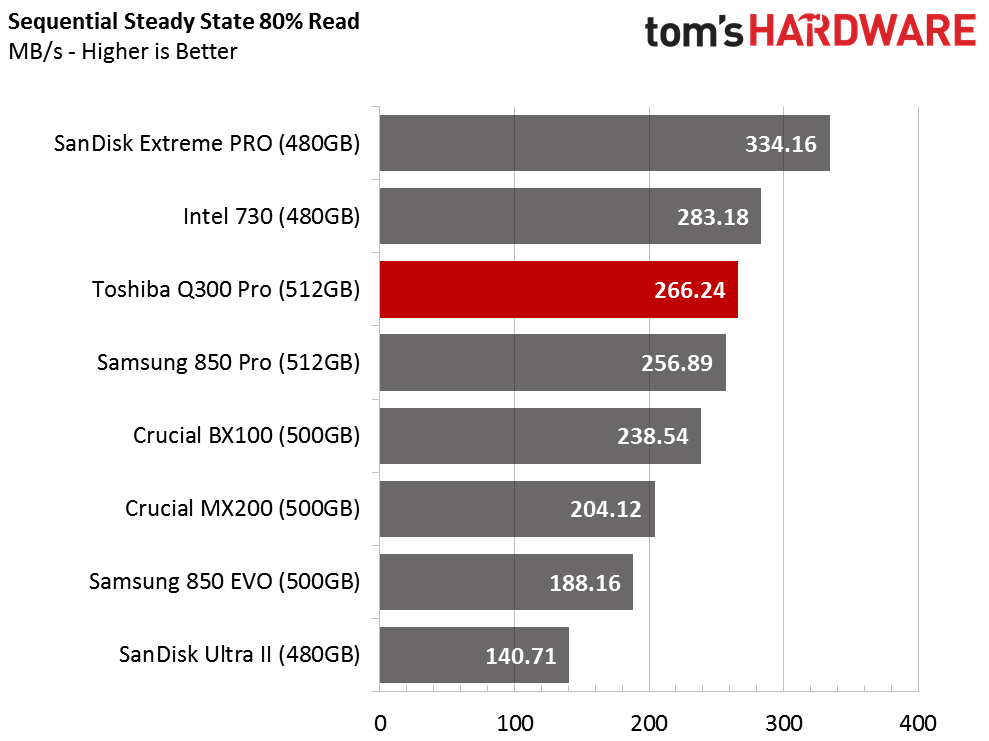
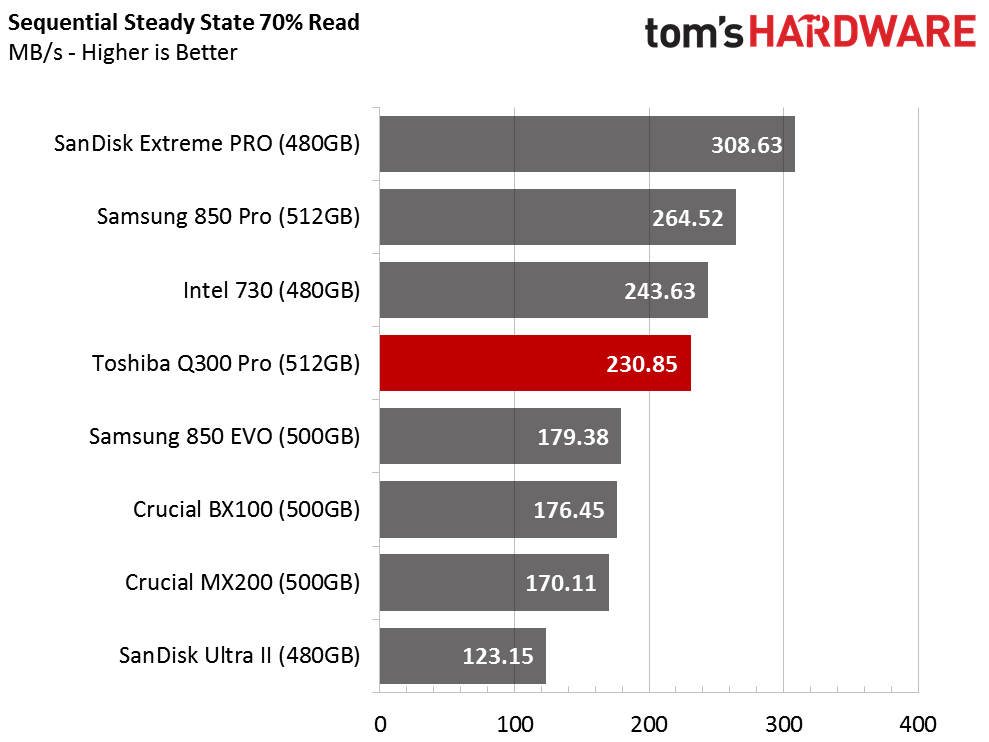
As the chart moves right, writes are added to the mix of reads. The lack of DRAM exposes sequential transfers we normally associate with single-plane TLC flash in a steady state condition. That is to say the Q300 Pro has trouble writing data quickly. The safety mode we saw triggered earlier likely plays a role here, as this drive wasn't designed for such taxing workloads. When it's almost full, expect it to slow significantly.
Random Write Steady State
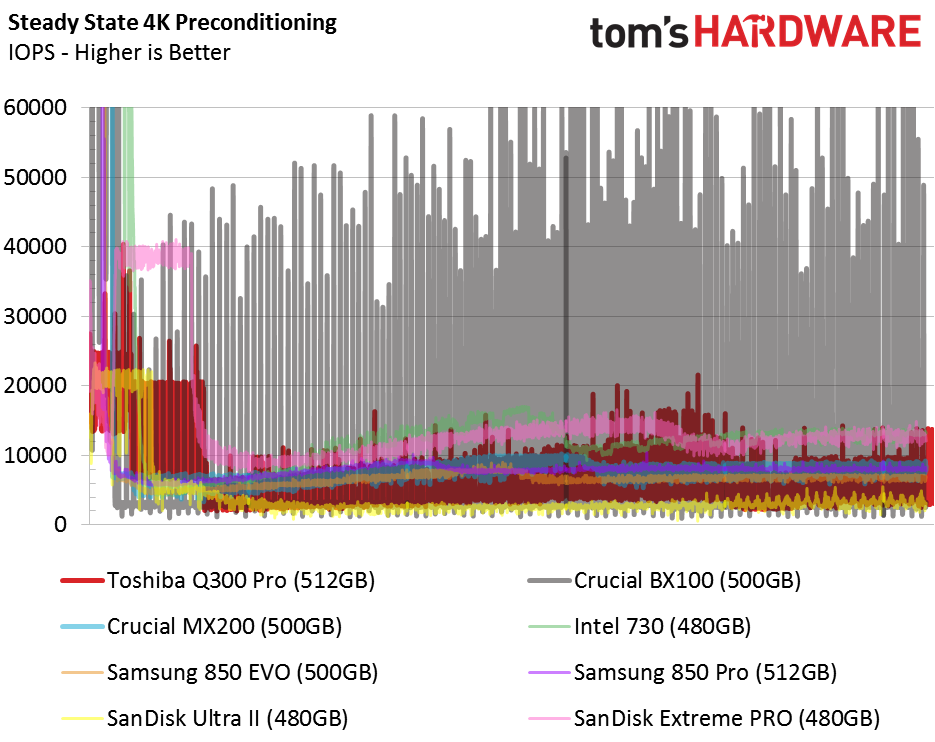
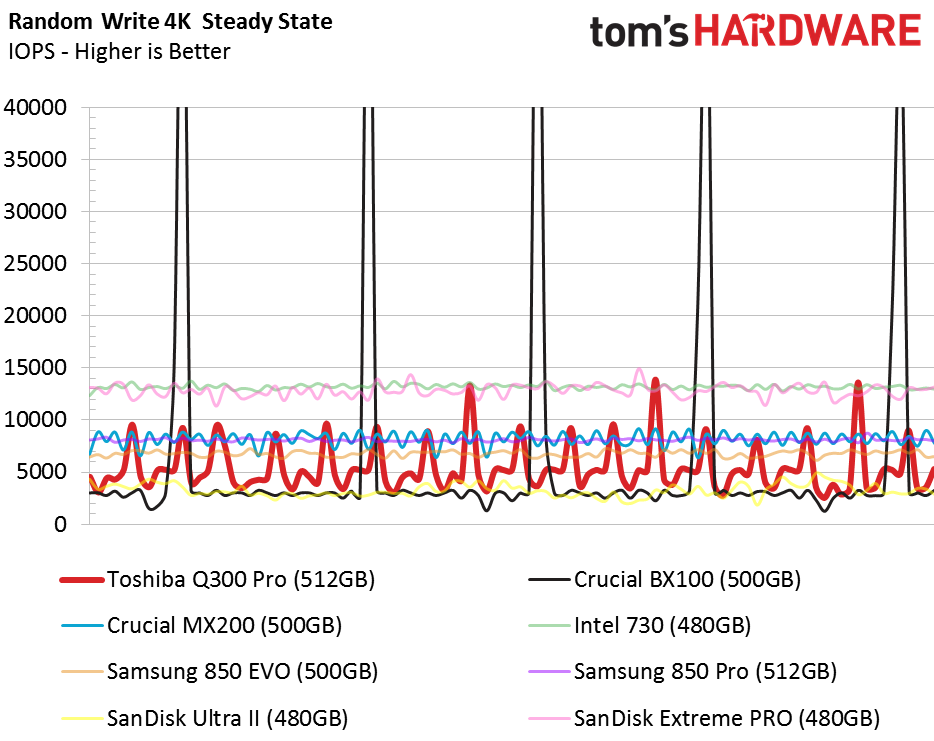
Most enthusiasts will never see a random write-induced steady state condition. Good thing, too. This is a very low-performance state, where every cell has 4KB of data on the flash as more 4KB blocks hit the drive. It's an enterprise test that's really reserved for OLTP systems (database servers).
The test does allow us to see the low side of random performance. We're looking for the smallest possible deviations between the high and low points, as well as high IOPS. Drives like SanDisk's Extreme Pro and Intel's SSD 730 give us what we're looking for. Both of those examples are great in a RAID 0 array. The Q300 Pro, without a DRAM buffer, is not. Its I/O performance is low and inconsistent.
Get Tom's Hardware's best news and in-depth reviews, straight to your inbox.
Current page: Mixed Workload And Steady State
Prev Page Four-Corner Testing Next Page Real-World Software Performance
Chris Ramseyer was a senior contributing editor for Tom's Hardware. He tested and reviewed consumer storage.
